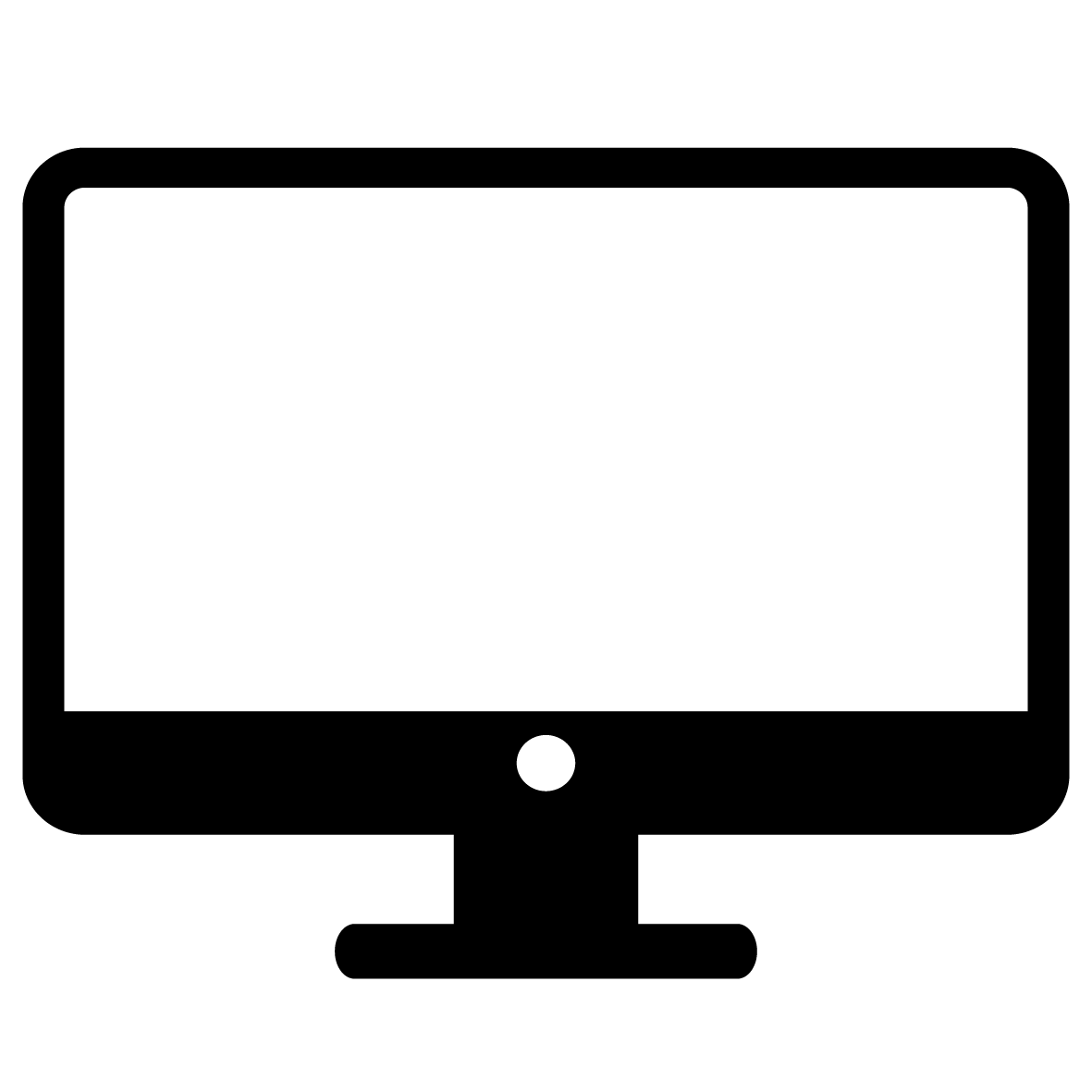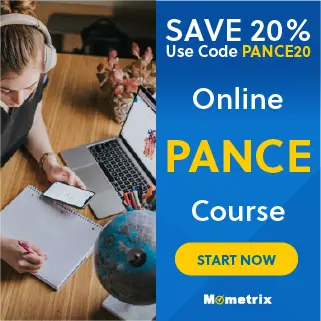If you need help studying for the Physician Assistant National Certifying Examination (PANCE) or just want some more information about what the test is like, you’ve come to the right place.
Click below to take a free PANCE practice test!
Exam Eligibility
Before you can register to take the PANCE, you’ll need to graduate from an entry-level PA program, which must be accredited by ARC-PA.
What’s on the Exam?
First, let’s talk about the questions on the exam. There are 300 multiple-choice questions total, but some of the questions won’t count toward your score. Why is that?
The unscored questions on the PANCE exam are called “pre-test” questions. These are added to the exam to determine if they’re good enough questions to add to future versions of the test.
The trick is that you won’t have any way of knowing which questions are scored and which ones are pre-test. They will appear just like the scored questions throughout the test.
The exam is split into five blocks. Each block contains exactly 60 questions and is timed at 1 hour, and you’ll get to take a break between each block. Just keep in mind that all of your breaks added together can’t take longer than 45 minutes, so be mindful of how long your breaks are.
PANCE Task Categories
Let’s take a closer look at the different task categories of the PANCE exam.
History-Taking and Performing Physical Examination
16% of the exam
- Obtaining relevant historical information from patients and caregivers
- Conducting detailed and/or problem-focused interviews and physical exams
- Performing general physical exam components and techniques
- Recognizing risk factors for the development of major medical conditions
- Identifying significant findings during physical examinations
- Recognizing signs and symptoms of major medical conditions
- Eliciting additional patient information from external sources
- Determining the need for specialist consultation or referral
- Identifying key patient and family historical information
- Identifying crucial physical examination findings
- Triaging patients based on abnormal vital signs, exam findings, and general observations
Using Diagnostic and Laboratory Studies
10% of the exam
- Determining the need for initial and follow-up diagnostic and laboratory studies
- Selecting appropriate diagnostic and laboratory tests
- Understanding indications for preventive screening tests
- Reviewing and interpreting diagnostic and laboratory results, correlating them with patient history and physical findings
- Educating patients about diagnostic and laboratory procedures
- Communicating risks, benefits, and results effectively to patients, families, and caregivers
- Effectively communicating risks, benefits, and results to the healthcare team
- Collecting diagnostic and laboratory specimens properly
- Recognizing the risks associated with diagnostic and laboratory studies
- Ensuring the safe and proper use of diagnostic equipment
Formulating the Most Likely Diagnosis
18% of the exam
- Understanding the significance of diagnostic and laboratory studies in diagnosis
- Assessing the importance of history in forming differential diagnoses
- Evaluating physical examination findings and their relevance to diagnosis
- Developing differential diagnoses for complex or multisystem cases
- Formulating the most probable differential diagnoses
- Integrating history, physical findings, and diagnostic data in clinical decision-making
- Identifying the need for specialist referral
- Selecting the most likely diagnosis based on available data
Health Maintenance, Patient Education, and Preventative Measures
11% of the exam
- Providing patient education on preventable conditions and lifestyle changes
- Emphasizing primary and secondary prevention through education on modifiable risk factors
- Early detection and prevention of medical conditions
- Recognizing and addressing signs of abuse and neglect
- Adapting health maintenance to the individual patient’s context
- Implementing immunization schedules for infants, children, adults, and travelers
- Recommending preventive screenings
- Communicating effectively with patients, families, and caregivers about medical conditions
- Preventing communicable diseases through education and vaccination
- Understanding the psychosocial effects of illness, stress, and injury, and promoting healthy coping strategies
Clinical Intervention
16% of the exam
- Recognizing and initiating treatment for life-threatening conditions
- Understanding clinical procedures
- Formulating and implementing treatment plans based on practice guidelines
- Managing, treating, and following up on medical conditions
- Prioritizing tasks in patient care
- Evaluating patient response to treatment and interventions
- Using sterile techniques and universal precautions, including special isolation conditions
- Making decisions on hospital admission or discharge based on established criteria
- Facilitating patient and caregiver adherence to treatment plans
- Interfacing within multidisciplinary teams and educating other healthcare professionals
Pharmaceutical Therapeutics
15% of the exam
- Selecting appropriate pharmacologic therapy and dosing
- Monitoring and adjusting pharmacologic regimens as needed
- Evaluating and treating adverse drug reactions and adverse effects
- Recognizing and managing drug interactions, including presentation and treatment
- Understanding contraindications and indications for drug use
- Maintaining knowledge of relevant pharmacologic agents
- Assessing and ensuring patient adherence to prescribed drug regimens
- Prescribing controlled substances with appropriate regulations
- Identifying and managing medication misuse
- Interacting with pharmacists to resolve medication-related issues
Applying Foundational Scientific Concepts
8% of the exam
- Understanding human anatomy and physiology
- Applying basic biochemistry concepts to medical practice
- Incorporating basic genetics into patient care
- Utilizing microbiology knowledge in clinical settings
- Relating pathophysiology and immunology principles to disease processes
- Critically evaluating emerging medical trends in relation to patient care
- Staying informed about trends in infectious diseases
- Connecting pathophysiologic principles to specific diseases
Professional Practice
6% of the exam
- Legal/medical ethics
- Medical informatics
- Patient care and communication
- Physician/PA relationship
- Professional development
- Public health
- Risk management
PANCE Medical Content Categories
The questions can also be categorized into medical content categories:
Cardiovascular System
11% of the exam
- Cardiomyopathy
- Conduction disorders/dysrhythmias
- Congenital heart disease
- Coronary artery disease
- Heart failure
- Hypertension
- Hypotension
- Lipid disorders
- Traumatic, infectious, and inflammatory heart conditions
- Valvular disorders
- Vascular disease
Dermatologic System
4% of the exam
- Acneiform eruptions
- Desquamation
- Diseases/disorders of the hair and nails
- Envenomations and arthropod bite reactions
- Exanthems
- Infectious diseases
- Keratotic disorders
- Neoplasms
- Papulosquamous disorders
- Pigment disorders
- Skin integrity
- Vascular abnormalities
- Vesiculobullous disease
- Other dermatologic disorders
Endocrine System
6% of the exam
- Adrenal disorders
- Diabetes mellitus
- Hypogonadism
- Neoplasms
- Parathyroid disorders
- Pituitary disorders
- Thyroid disorders
Eyes, Ears, Nose, and Throat
6% of the exam
- Eye disorders
- Ear disorders
- Foreign bodies
- Neoplasms
- Nose/sinus disorders
- Oropharyngeal disorders
Gastrointestinal System/Nutrition
8% of the exam
- Biliary disorders
- Colorectal disorders
- Esophageal disorders
- Food allergies and food sensitivities
- Gastric disorders
- Hepatic disorders
- Hernias
- Infectious diarrhea
- Ingestion of toxic substances or foreign bodies
- Metabolic disorders
- Neoplasms
- Nutritional and vitamin disorders
- Pancreatic disorders
- Small intestine disorders
Genitourinary System
4% of the exam
- Bladder disorders
- Congenital and acquired abnormalities
- Human sexuality
- Infectious disorders
- Neoplasms
- Nephrolithiasis/urolithiasis
- Penile disorders
- Prostate disorders
- Testicular disorders
- Urethral disorders
Hematologic System
5% of the exam
- Autoimmune disorders
- Coagulation disorders
- Cytopenia
- Cytoses
- Hemoglobinopathies
- Immunologic disorders
- Neoplasms, premalignancies, and malignancies
Infectious Diseases
7% of the exam
- Bacterial diseases
- Fungal diseases
- Mycobacterial diseases
- Parasitic diseases
- Prenatal transmission of disorders
- Sepsis/systemic inflammatory response syndrome
- Spirochetal diseases
- Viral diseases
Musculoskeletal System
8% of the exam
- Chest/rib disorders
- Compartment syndrome
- Degenerative diseases
- Infectious diseases
- Lower extremity disorders
- Neoplasms
- Rheumatologic disorders
- Spinal disorders
- Upper extremity disorders
Neurologic System
7% of the exam
- Closed head injuries
- Cranial nerve palsies
- Encephalopathic disorders
- Headaches
- Infectious disorders
- Movement disorders
- Neoplasms
- Neurocognitive disorders
- Neuromuscular disorders
- Peripheral nerve disorders
- Seizure disorders
- Vascular disorders
Psychiatry/behavioral Science
7% of the exam
- Abuse and neglect
- Anxiety disorders
- Bipolar and related disorders
- Depressive disorders
- Disruptive, impulse-control, and conduct disorders
- Dissociative disorders
- Feeding and eating disorders
- Human sexuality
- Obsessive-compulsive and related disorders
- Neurodevelopmental disorders
- Personality disorders
- Schizophrenia spectrum and other psychotic disorders
- Sleep-wake disorders
- Somatic symptom and related disorders
- Substance-related and addictive disorders
- Trauma- and stressor-related disorders
Pulmonary System
9% of the exam
- Chronic obstructive pulmonary diseases
- Infectious disorders
- Neoplasms
- Pleural diseases
- Pulmonary circulation
- Restrictive pulmonary diseases
- Sleep apnea/Obesity hypoventilation syndrome
- Other pulmonary disorders
Renal System
5% of the exam
- Acute disorders
- Acute kidney injury (acute renal failure)
- Chronic kidney disease
- Congenital or structural renal disorders
- End-stage renal disease
- Fluid and electrolyte disorders
- Neoplasms
Reproductive System
7% of the exam
- Breast disorders
- Cervical disorders
- Complicated pregnancy
- Contraceptive methods
- Human sexuality
- Infertility
- Menopause
- Menstrual disorders
- Neoplasms of the breast and reproductive tract
- Ovarian disorders
- Sexually transmitted infections/Pelvic inflammatory disease
- Trauma
- Uncomplicated pregnancy
- Uterine disorders
- Vaginal/vulvar disorders
How to Register
To get started with the registration process, you’ll need to submit an application on NCCPA’s website. The application will ask you for your contact information and any documentation to prove your eligibility (among other things).
When you submit the application, you’ll also need to submit the testing fee, which is $550.
PANCE Exam Scores
The test is scored using a scaled scoring method. Here’s how it works:
You will need a score of 350 to pass the test.
The reason your raw score is converted to a scaled score is because everyone who takes the test is given a slightly different set of questions. Since everyone has a different arrangement of questions, and because some questions are harder than others, converting your raw score to a scaled score ensures a more even playing field.
Retaking the Exam
If you didn’t get a passing score on your first try, that’s okay! You can retake the test after a 90-day waiting period.
Keep in mind that you will have to pay the full testing fee every time you retake the test, and you can only take the exam up to three times per calendar year.
Online PANCE Prep Course
If you want to be fully prepared, Mometrix offers an online PANCE prep course. The course is designed to provide you with any and every resource you might want while studying. The PANCE course includes:
- Review Lessons Covering Every Topic
- 600 PANCE Practice Questions
- More than 500 Digital Flashcards
- Over 30 Instructional Videos
- Money-back Guarantee
- Free Mobile Access
- and More!
The PANCE prep course is designed to help any learner get everything they need to prepare for their PANCE exam. Click below to check it out!
FAQs
How long is the PANCE?
The time limit for the exam is 5 hours plus an additional 45 minutes allotted for breaks.
How many questions are on the PANCE?
The exam contains 300 questions.
What is the passing score for the PANCE?
You’ll need to get a final scaled score of at least 350 to pass.
How much does the PANCE cost?
The testing fee is $550.



 PANCE Online Course
PANCE Online Course PANCE Study Guide
PANCE Study Guide PANCE Flashcards
PANCE Flashcards

